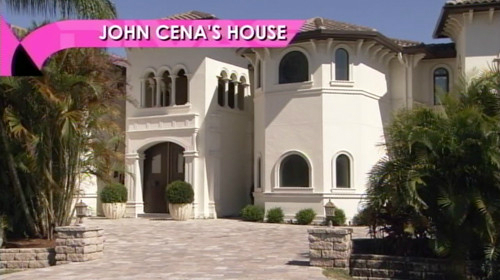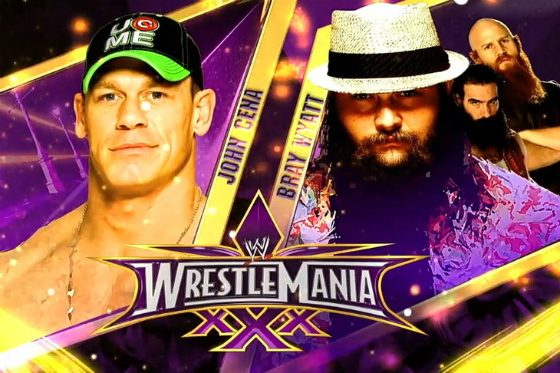Top-Down Smackdown: Face to Face
 |
A couple of weeks ago, I wrote about what makes a good villain. Based on the feedback I got from that, I think this week we need to talk about what makes a great hero.
But before we do, I think we need to understand what made the great, iconic personalities of the ’80s, who got wrestling to the level it’s at today. And realize how that logic no longer applies in any way.
The ’80s was when pro-wrestling became a national phenomenon, with the rise of WrestleMania, cable TV, and pay-per-view. It was when most of us became fans…but also strongly rooted, perhaps unbeknownst to most of us, in its older traditions. Prior to the Hulkamania era, wrestling was divided into regional territories, most of which were governed by the National Wrestling Alliance (NWA), which determined the world champion. Regional promotions would have their own champions, and the World Champion would occasionally visit, wrestle the top local hero, and make them look good while narrowly retaining the title – every once in a while, this formula would be upended with a local hero actually winning, as when Kerry Von Erich beat Ric Flair, but soon the title would be lost back to the champion picked by the NWA governing body.
When Vince McMahon took the WWF national on cable TV, and wanted it acknowledged in the mainstream as the only national promotion, he had no reason to continue this logic, and made sure it was perceived that his champion, Hulk Hogan, could easily crush every contender, including former NWA greats like Harley Race whom he paid to take the fall. The NWA, which would centralize and eventually become WCW, stuck to the old logic, with Ric Flair as the bad-guy champion every hero would come this close to beating…but failing. When Flair eventually became a good guy, it was as much due to territorial loyalty as anything – WCW was seen by Southern fans as “their” promotion, and Flair their most marketable guy against New York’s Hogan.
We’re a long way from that now, with McMahon wanting to compete with Hollywood rather than any other wrestling companies (and frankly, TNA doesn’t have the same claim on “regional” loyalty as Flair and WCW did). After the age of Hogan came the attitude era, with lines blurring and R-rated catchphrases becoming the norm. But when cultural tides shifted, and Vince wanted a Mattel toy deal, WWE went back to PG product, and thought that the way to do it was to go back to the Hogan formula with John Cena. It hasn’t worked. And here’s why.
I may not know as much about the inner workings of wrestling as some, but I do have a degree in film, and I know what makes a hero/protagonist work. The key to any good hero is that they have an obstacle to overcome, and they have one crucial flaw they must beat. In Hogan’s case, these were secondary, but they were there, as separate things – the obstacle to overcome was usually a superhuman monster, like Andre the Giant, Kamala the Headhhunter, the Undertaker, or even the Ultimate Warrior – characters who were portrayed as more than human, who made even the strongest American hero think twice. Other foes he faced played to his key flaw of being too trustworthy – friends like Paul Orndorff or Randy Savage who’d stab him in the back and make him afraid to really give his all. (Separate for our purposes are un-Americans like Iraqi-sympathizer Sgt. Slaughter, or the Iron Sheik – we knew Hulk would easily win, but it was a simplistic catharsis for uncertain political times.)
Now, as I stated in the column about heels, fans today are savvy, and tend to cheer those who they see as hard-working, talented competitors, and boo those whom they feel took a shortcut, regardless of how they’re portrayed as characters. John Cena is generally regarded as a good guy in real life, so how is he hated so much? It’s all due to a misunderstanding by Vince in how to portray heroes and villains. Ironically, the man who wants his company to be viewed as entertainment rather than “rasslin'” is hamstrung by the old archetype, which was a reaction to a system that no longer exists. You can’t just plug Cena into the Hogan plan.
 |
| Which one looks more relatable to the average wrestling fan? |
First of all, what is Cena’s obstacle? None. We don’t believe for a second that if the script calls for him to compete for the title, he won’t win it. People forget that for much of Hogan’s reign, he’d bluster out of the gate, get his ass handed to him most of the match, then Hulk up for the win. Silly as it was, we as kids believed he actually might lose. During the attitude era, The Rock claims he made sure to lose as often as he won, in order to keep the jeopardy alive (that, at least, is what he told me years ago in an interview; some years after that, Steve Austin told me “That’s some bullshit right there – I guarantee you the Rock didn’t go to Vince and ask to lose more matches”). There is rarely a chance that John Cena will lose anything – and certainly none that he will lose fairly.
Second, what is Cena’s character flaw that he must overcome? Have any good friends turned on him? No. He’s perfect. Even when he was forced by stipulation to join the evil Nexus, he just ignored everything they told him to do and beat them all up.
Cena’s opponent will always be the underdog, and that’s the problem. And when it’s a guy like Bray Wyatt, who already has the “flaw” of being a fat guy who doesn’t fit the mold of what a wrestler looks like, and a gimmick that looks a whole lot like poor white trash – in tough economic times, who do you THINK people will root for?
Ironically, Total Divas handed WWE a golden opportunity that they ignored – in depicting Nikki Bella’s relationship with Cena, it revealed Cena to be an OCD control-freak who came close to pushing her completely away over his neuroses. In other words…A CHARACTER FLAW TO BE OVERCOME. For the first time in years, John Cena became a compelling TV character, because of who he actually was.
I thought that was how wrestling was supposed to work.
(This is up early, but feel free to discuss Raw below)
